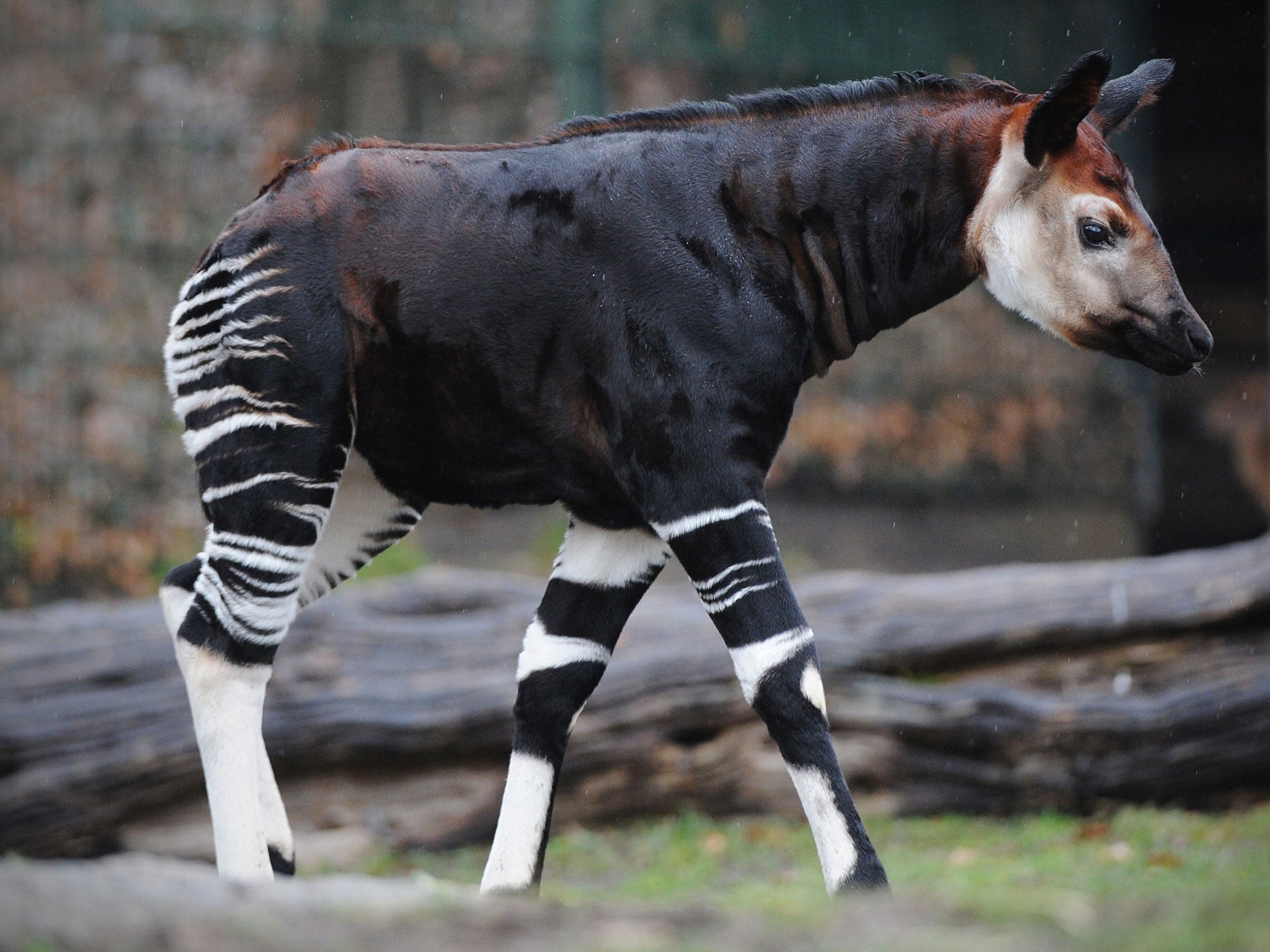Nature Studies: Animals are also victims of war - and in Congo, that means the beautiful okapi

For ages, it was just a myth; soon, it may be just a memory. The okapi, the "forest giraffe" from the Congo - that gentle, fascinating beast known to Western science only since 1901 - is now threatened with extinction. War, illegal hunting and habitat destruction are going to do for it.
How quickly it all seems to be going, does it not? This mammal and that bird, this turtle and that frog…so many of them sliding down the slope to oblivion, all around the world, as revealed today in the latest annual update of the Red List of threatened species, compiled by the International Union for the Conservation of Nature.
The IUCN has now closely assessed the conservation status of 71,576 living things, and extinction is in prospect for no fewer than 21,286 of them. That's 30 per cent. Of these, the okapi stands out for having jumped two ranks of the IUCN threat categories at one go, in the 2013 update, from "near threatened" to "endangered" (skipping over "vulnerable"). Only "critically endangered" remains - and then there's just memories.
The alert about the okapi follows a new assessment of its population in its only home, the rainforests of the eastern side of the Democratic Republic of the Congo. For nearly 20 years, this region has been one of the most dangerous places on earth, for humans and for animals both, ever since the 1994 Hutu-Tutsi genocide in Rwanda spilled over the border into the DRC and sparked continuous conflict between the government and a shifting assortment of rebel groups, in what became known as "Africa's world war".
It may have killed five million people; it has certainly made protecting the DRC's wildlife a terribly dangerous job, and I have written here in admiration of the brave people who do it, such as John Kahekwa, who looks after the gorillas of the Kahuzi-Biega National Park, and the rangers of the Virunga National Park further north, 140 of whom have been killed.
Those looking after the okapi have not escaped. Since 1992 the centre of conservation efforts has been the Okapi Wildlife Reserve in the Ituri forest, and in June last year the reserve's research centre was attacked by a rebel group made up of elephant poachers and illegal miners; the centre was burned to the ground and seven people were killed, as were all 14 okapis the centre was looking after.
Completing the new assessment has been dangerous and difficult, too difficult to give accurate numbers, but there is no doubt that the rebels in the forests are hunting okapis steadily and their numbers are tumbling; there are thought to be far fewer than the last assessment of 35,000.
"The Okapi is revered in Congo as a national symbol - it even features on the Congolese franc banknotes," said Dr Noëlle Kümpel, an okapi expert from the Zoological Society of London, part of the international team which carried the assessment out. "Sadly, DRC has been caught up in civil conflict and ravaged by poverty for nearly two decades, leading to widespread degradation of okapi habitat and hunting for its meat and skin. Supporting government efforts to tackle the civil conflict and extreme poverty in the region are critical to securing its survival."
While any species loss is tragic, the disappearance of Okapia johnstoni would deprive us of one of the world's most appealing and engaging animals. The giraffe's only extant relative - it is a shorter-necked cousin, with striped hindquarters like a zebra - the okapi is possessed of a prehensile tongue, which is not only coloured blue, but is so lengthy and manoeuvrable that is can clean its own eyelids with it, and even its ears, inside and out - something which, had it been known for longer, would surely have qualified it for a popular song.
Long familiar to the Congo forest peoples, rumours of the beast began to reach western scientists after explorers such as Henry Morton Stanley - the man who said, "Dr Livingstone, I presume?" - began trekking through the country in the 19th century.
It was sometimes thought of as a mythical creature and referred to as "the African unicorn", but its true nature was discovered by a British colonial administrator in neighbouring Uganda, Sir Harry Johnston (the source of the okapi's scientific name) who got hold of a skin and a skull in 1901, and sent them back to London. There, amid much excitement at the discovery of a new large mammal, it was established that it was to the giraffe, and not the unicorn family, that the beast truly belonged.
The first live okapi seen in Europe was brought to Antwerp Zoo in 1919, and currently more than 40 zoos around the world have the animals in their collections, including Britain's Chester Zoo, where a year ago a baby okapi, named Tafari, was born to its parents Stuma and Dicky, an extremely rare event. Congratulations, Stuma and Dicky - but I have to say, it is to their wild relatives in the Ituri forest, increasingly looking extinction in the face, that my heart goes out.
Join our commenting forum
Join thought-provoking conversations, follow other Independent readers and see their replies
Comments
Bookmark popover
Removed from bookmarks